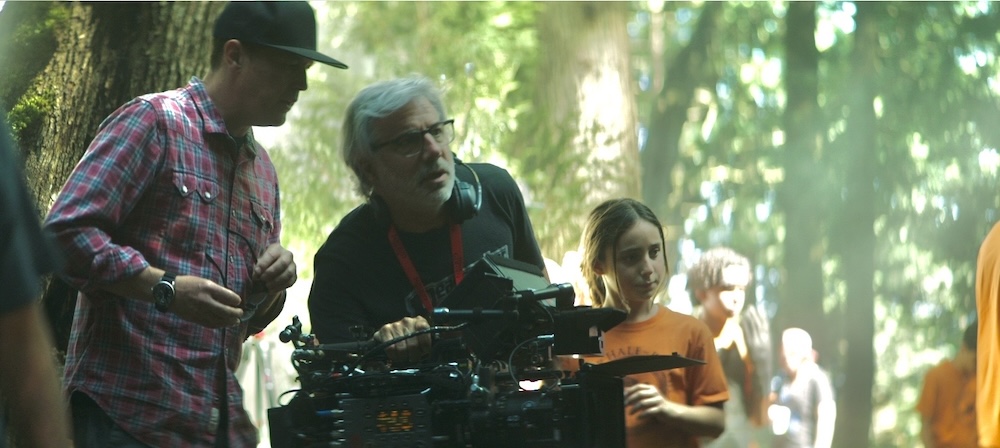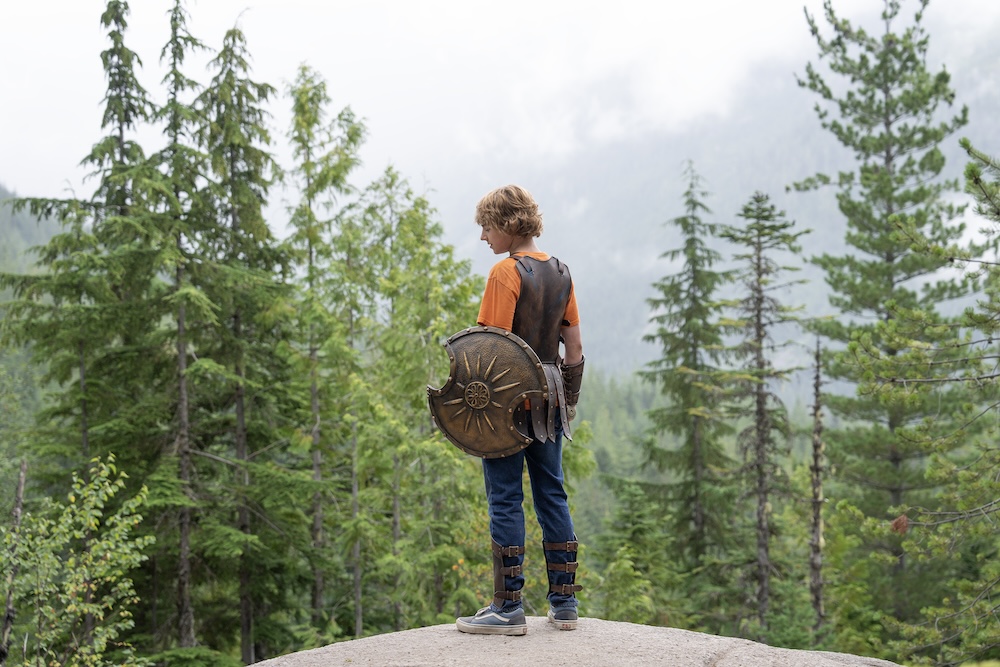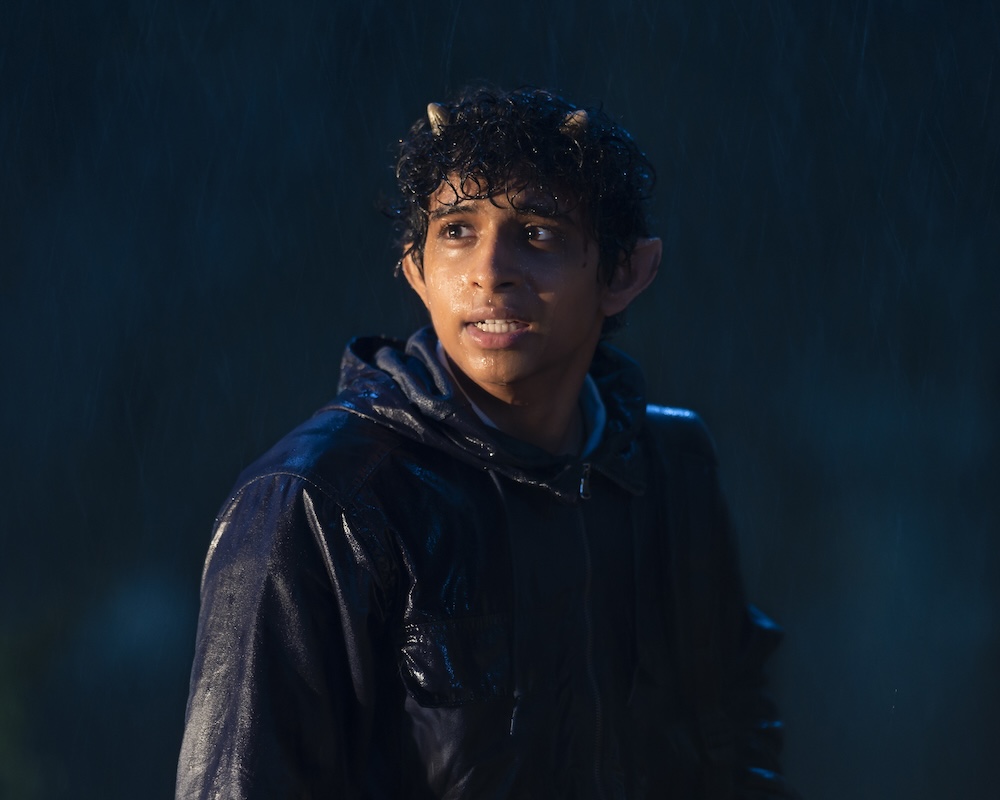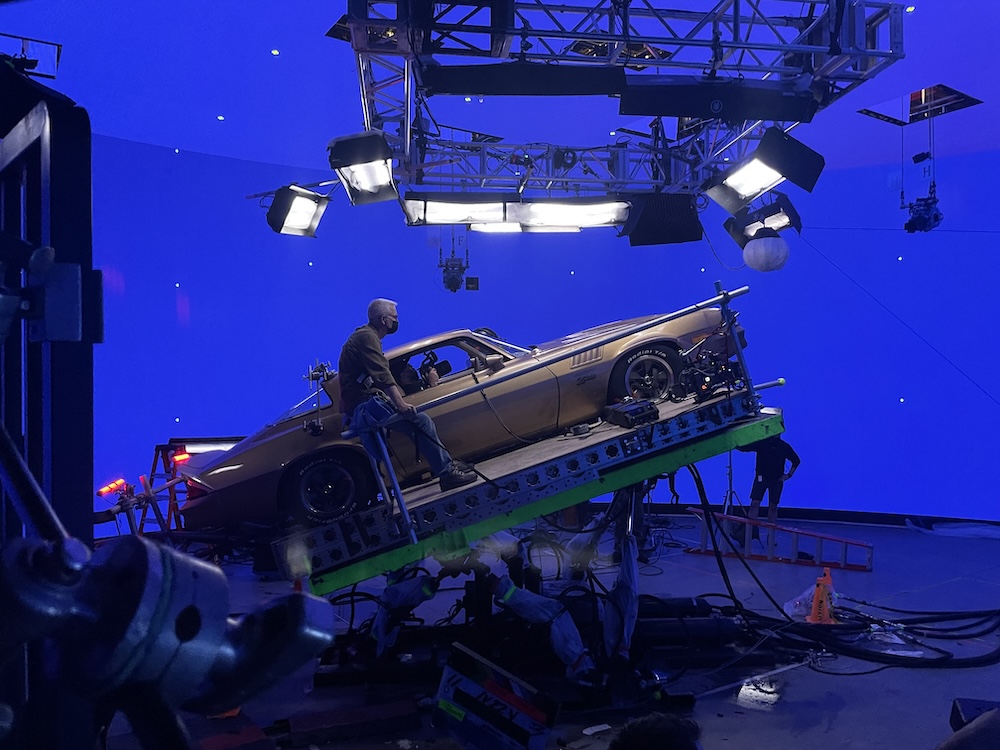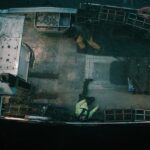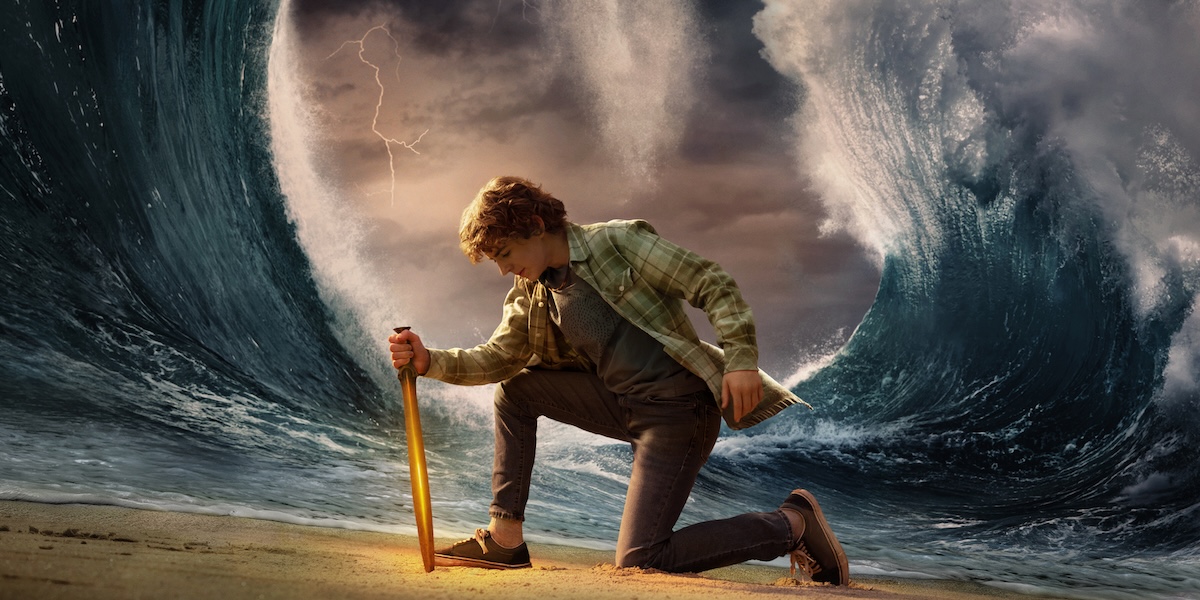
A demigod among men: Percy Jackson and the Olympians
Posted on Feb 20, 2024 by Katie Kasperson
Turning YA phenomenon Percy Jackson into a TV series was the ultimate quest for cinematographer Pierre Gill, CSC. Sticking to the source material, with Percy at the centre, was key
Words Katie Kasperson
Twilight, Harry Potter, The Hunger Games, Divergent – the nineties through to the 2010s were ripe with young-adult (YA) fantasy novels and their on-screen adaptations. Percy Jackson & the Olympians, a six-book series written by Rick Riordan, was another big title in this trend.
Though the first two Percy Jackson novels were made into movies starring Logan Lerman, critical reception was poor, particularly slamming the films’ deviations from the original Riordan story. So, when Disney picked up Percy Jackson for a television adaptation, fans were cautiously optimistic, hoping for something truer to the source text.
When Disney initially approached cinematographer Pierre Gill, CSC – whose daughter has read the series – for the project, he kept this hope in mind. The books, written from Percy’s perspective, served as the principal inspiration, with Riordan on board as an executive producer. “I wanted to do a project my daughter would enjoy,” admits Gill. “Every day, when I read the scenes we had to shoot, I was becoming Percy Jackson.”
ALL IN THE EYES
Gill established Percy Jackson and the Olympians’ visual language – as he does with every project – by first creating a lookbook. “It starts with a page titled ‘faces’: I wanted to make sure that the focus is on the actors. And then the last page is called ‘scope’: big flashy shots that would play into the adventure side of the show,” he explains. For the latter, he cites ET the Extra-Terrestrial, Crouching Tiger, Hidden Dragon, Lord of the Rings and The Green Mile as inspirations.
The ‘faces’ in question are Walker Scobell as the titular hero, Aryan Simhadri as Grover Underwood and Leah Sava Jeffries as Annabeth Chase. A range of guest stars (including Jason Mantzoukas and Lin-Manuel Miranda) also appear as supporting characters.
The series retains Percy as the first-person narrator, which Gill and his crew demonstrate through flashbacks, eyeline shots and voiceovers. “My job is to immerse myself in the character, and I do a lot of it intuitively,” he shares. “This allowed me to focus on portraying the world from Percy’s perspective.”
In his lookbook, “all the photos really emphasise the eyes,” states Gill. “It’s something I am extremely proud of in Percy Jackson; you can see the eyes clearly in many shots and the emotions are clear to the audience.” For instance, Gill talks us through the Minotaur chase scene in episode 1, which borrows its title, I Accidentally Vaporise My Pre-Algebra Teacher, from the first chapter in The Lightning Thief. “The eyes of Percy, his mom and Grover all show how emotional that sequence is for them,” argues Gill. “A lot of that was achieved by the choice of lens and how close I went with the lens to the actors.”
GODLY GEAR
Gill recalls testing ‘hundreds of lenses’ before eventually settling on the Cooke Anamorphic/i S35 range. His primary consideration was what would work best in a volume rather than on location, as many of the show’s more mythical scenes are computer-generated. He chose to shoot anamorphic because ‘it keeps you close to the actors and their emotions’ while still being able to deliver on the essential ‘scope’.
Gill selected the Sony VENICE 2 as the show’s main camera – a ‘great mix’ with the Cooke anamorphics. “They are a little harder to work with because they are heavy – but they are beautiful, soft for the faces, and I thought they were perfect,” he admits. To reduce flare, Gill shipped the optics to Alex Theodore, a technician at Vancouver’s William F White, who “spent thousands of hours tweaking four sets of lenses for me. It was an absolutely huge undertaking.”
MAKING OF A MYTH
At its core, the Percy Jackson story is a modern take on ancient mythology, with contemporary settings like New York City and Las Vegas taking on a new, fantastical form. LED Volume played a significant role in bringing the impossible to life.
“Disney knew right away that the volume was something they wanted to use,” begins Gill. But up to this point, it had mostly been used for fantasy and exteriors.” Industrial Light & Magic (ILM), the VFX company founded by George Lucas, worked with Gill to create virtual interiors, specifically of the Metropolitan Museum of Art (Met), which appears twice in the first episode. “All the interiors of the Met were done on a volume, with barely any touch-ups in post; something I am extremely proud of.”
The Minotaur sequence, a defining moment in Percy’s personal journey, also relied on virtual production. “The background was created on a volume with the ILM team over a month and a half,” recalls Gill. “We used real rain, but VFX added a lot to make it look better. The actual Minotaur was – most of the time – a stunt person running on stilts around Percy. It was amazing to watch. Then, VFX erased it and replaced it with a computer-generated Minotaur.”
Working with an LED volume proved worthwhile for several reasons; the main one being that ‘you see what you shoot’, giving both cast and crew a more immersive filming experience. “Another advantage is being able to shoot places that would be hard to do on location, like the Met exteriors and interiors, which are incredibly popular, touristy spots in New York City,” explains Gill. “The volume gave us the ability to shoot in the middle of the day, making the schedule easier.” This was especially useful when working with minors, who are already scarce on time.
The final product is a show that’s part virtual and part practical. For Gill, this was often a difficult balance to strike. “The ILM team were incredibly helpful; they created tools that allowed me to manipulate the position of the sun and other elements,” he details. “I had a lot of conversations with them and the showrunners about what was possible. There are moments where it’s hard to tell the difference between volume and reality, which is what we wanted.”
PROMETHEAN PRACTICALS
In the first two episodes alone, many scenes occur at night, lit by campfire or car headlights. “I love a light source in my shots,” Gill comments, arguing that practicals prove ‘less artificial and more realistic’. For instance, headlights illuminate the Minotaur, ‘helping the volume disappear into the background’.
Another example is the fire ablaze in the Montauk cottage where Percy and his mother Sally (Virginia Kull) go after he’s kicked out of school. “Sally talks with Percy about him being a demigod,” Gill explains – a life-changing conversation that begins to clue Percy in to the strange things he’s been experiencing. “The fire creates a cosier and more intimate atmosphere by ‘polluting’ the lens and introducing more warmth,” which suits the moment between mother and son.
“Overall, I tried to implement as much practical light as possible to ensure that the images felt completely grounded,” Gill summarises.
QUEST COMPLETED
Although the debut series will only cover the content from first novel, The Lightning Thief, early reviews have been overwhelmingly positive, with audience viewership hitting 13.3 million (in its first six days) for episode 1 alone. “I don’t think I fully realised just how popular the books were,” confesses Gill. “But it was a nice new challenge.
“I am impressed by the actors. All three – Walker, Aryan and Leah – did an incredible job every day,” Gill enthuses. “I can’t wait for the audience to see more.”
Percy Jackson and the Olympians is now streaming on Disney+
This story appears in the March issue of Definition. Read the full magazine here.


